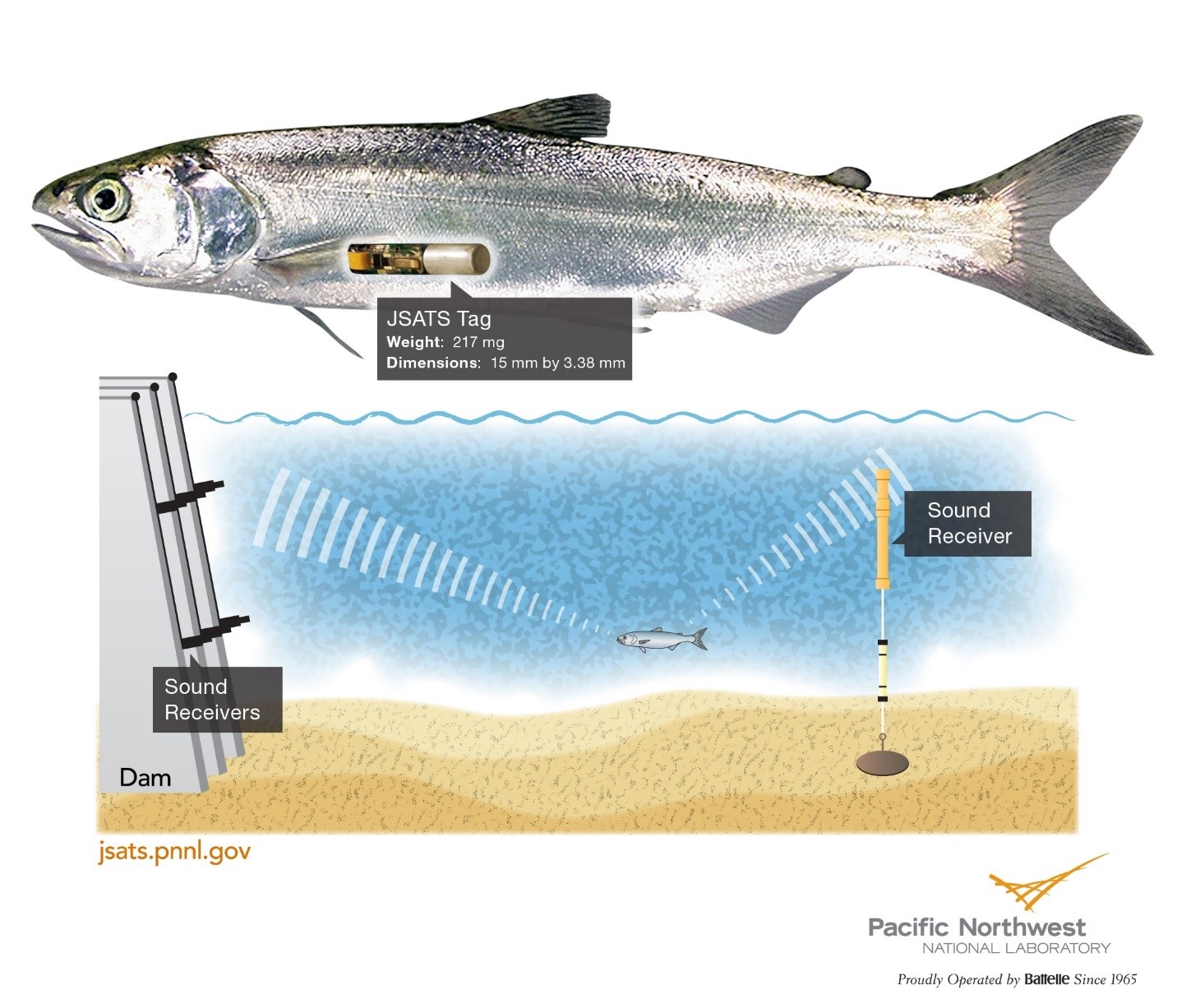How JSATS Works
JSATS consists of acoustic transmitters, receivers, and data management and processing software.
The acoustic transmitters contain a transducer that intermittently produces signals by inducing high-frequency (416.7 kHz) vibrations in the water. These vibrations, or signals, are received by a stationary or mobile hydrophone submerged in the water. The vibrations are converted to electrical impulses that are sent to the receiver. The receiver, in turn, identifies the signals as a unique tag code and stores them to memory along with the hydrophone identification, time and date of detection, and environmental variables such as pressure and temperature.

Data from a single stationary hydrophone allow researchers to determine if and when a specific individual fish passed the hydrophone location. Multiple stationary hydrophones arranged along transects (e.g., across a river channel) are referred to as arrays. The arrays detect whether or not a tagged fish passes a specific site. These types of arrays are commonly used in large rivers, lakes, reservoirs, and estuary and near-shore ocean environments. Three-dimensional hydrophone arrays can be deployed to not only detect the presence or absence of a tagged individual but also provide three-dimensional vectors (range, bearing, and depth) of the individual's movement. Three-dimensional arrays are frequently used around dams to assess route-specific dam passage behavior. Real-time, three-dimensional movement vectors can be obtained by tracking tagged individuals with a vessel-mounted hydrophone, referred to as mobile tracking. This method is useful for monitoring tagged individuals in lakes, reservoirs, or between stationary arrays in large rivers or estuaries. All system components are routinely tested in PNNL's Bio-Acoustics & Flow Laboratory (BFL).
BFL is accredited by The American Association for Laboratory Accreditation (A2LA) to ISO/IEC 17025:2005, which is the international standard for calibration and testing laboratories. The scope (Certificate Number 3267.01) includes hydrophone sensitivity measurements and power level measurements of sound sources for frequencies from 50 kHz to 500 kHz for both military equipment and commercial components. This certification permits PNNL to perform primary certified testing both on instruments made at PNNL and by others.
To learn more about PNNL's licensing and collaboration opportunities, download the “Fish-Tracking Technologies” brochure.
More detailed info on JSATS hardware and its operation can be found at:
Autonomous system and application:
The juvenile salmon acoustic telemetry system: a new tool
Cabled system:
Decoding algorithm:
A fast and accurate decoder for underwater acoustic telemetry
3-D tracking algorithm: